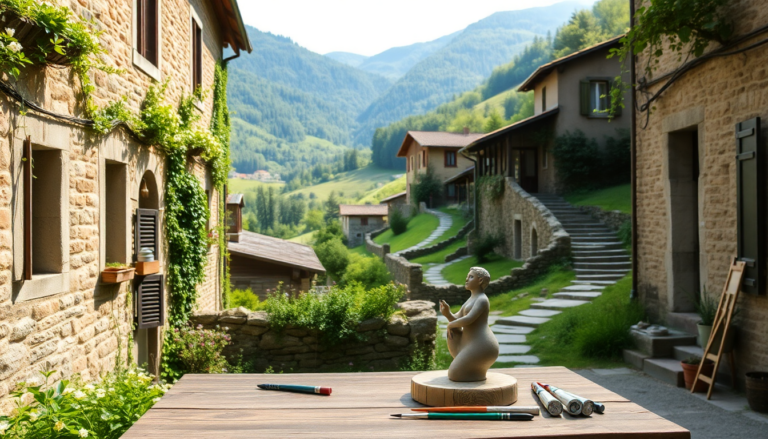Argomenti trattati
In the serene embrace of the Antrona Valley, tucked away in the Verbano-Cusio-Ossola region of Piedmont, lies the charming village of Valleggia. This isn’t your typical tourist destination; in fact, it’s home to just three residents. Yet, this quaint hamlet tells a remarkable story of resilience, artistry, and revival, thriving in a way that defies expectations. Instead of bustling bars or flashy hotels, you’ll find a vibrant atmosphere brimming with creativity, largely thanks to the visionary efforts of artist Giorgio Sartoretti, who brought life back to this forgotten corner of the world.
The Story Behind Valleggia
Valleggia isn’t just a dot on the map; it’s a living canvas painted by its caretaker, Giorgio Sartoretti. After leaving a career in education, Giorgio immersed himself in the tranquil beauty of the Ossola mountains, dedicating his life to restoring this unique village. His meticulous work revitalized crumbling buildings, reestablished ancient pathways, and repaired dry-stone walls. Over time, his home transformed into a gallery, showcasing sculptures and paintings that turn every corner of the village into a permanent outdoor exhibition.
Visitors lovingly dubbed him “the hermit of Valleggia,” a title that perfectly captures his solitary yet profound impact on this artistic revival. Even after his passing in January 2022, Giorgio’s legacy continues to resonate, breathing charm and creativity into the heart of Valleggia.
The Artistic Journey Through the Village
The soul of Valleggia can be found in Giorgio’s studio, an unpretentious yet creatively charged space filled with wooden sculptures, handwritten manuscripts, and vibrant paintings. Each room tells a story, inviting you to explore the mind of a man who saw beauty where others only saw decay. Isn’t it fascinating how art can transform a simple space into a treasure trove of memories?
As you stroll along the cobblestone paths, you’ll stumble upon outdoor installations that seamlessly blend with the village’s rustic backdrop. These artistic surprises emerge unexpectedly from stone walls or beside bubbling fountains, each piece a testament to Giorgio’s vision of making art accessible and an integral part of village life. The restoration of old ovens and stables into communal shelters for hikers, along with the revival of washbasins as meeting spots, breathe new life into Valleggia, fostering connections among visitors.
Nature’s Embrace and Hiking Trails
Perched at an altitude of around 800 meters, Valleggia is surrounded by lush, unspoiled nature. This village serves as a gateway to numerous hiking trails that wind through the dense woods of the Antrona Valley, showcasing majestic beech, chestnut, and birch trees. In the summer, these trails are accessible even for well-prepared children and offer breathtaking views of the valley below and the Pennine Alps above. Can you imagine the sense of peace while soaking in such stunning landscapes?
For history buffs and archaeology enthusiasts, the trails reveal remnants of ancient agricultural terraces, old mule tracks, and stone bridges, each telling the tale of the land’s rich past. This enchanting environment is perfect for photography, sketching, or simply meditating in the tranquility that surrounds you. The journey to Valleggia is easily accessible by car to Montescheno, followed by a picturesque 20-30 minute hike. If you prefer public transport, the nearest train stations are in Domodossola and Villadossola.
While Valleggia itself lacks accommodation and dining options, visitors are encouraged to bring along water and snacks for a leisurely exploration. Two welcoming establishments in Montescheno provide a comfortable base for those wanting to bask in the area’s natural beauty at a relaxed pace. And if you’re eager for more adventure, nearby Antrona Schieranco serves as the “gateway” to the Alta Valle Antrona Natural Park, where you can continue to explore alpine lakes and breathtaking landscapes.
There’s truly no wrong time to visit Valleggia; however, winter conditions may make access a little more challenging. Regardless of when you choose to wander here, the village remains a captivating canvas painted by nature and art, inviting everyone who arrives to lose themselves in its enchanting stories.

